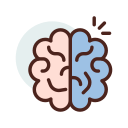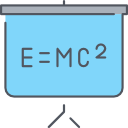Text
A Foundation in Digital Communication
The book emphasizes the geometric view, opening with the inner product, the matched filter for its computation, Parseval's theorem, the sampling theorem as an orthonormal expansion, the isometry between passband signals and their baseband representation, and the spectral-efficiency optimality of Quadrature Amplitude Modulation (QAM). Subsequent chapters address noise, with a comprehensive study of hypothesis testing, Gaussian stochastic processes, the sufficiency of the matched filter outputs, and some coding theory. New is a treatment of white noise without generalized functions and a rigorous presentation of the power spectral density without artificial random jitters and random phases in the analysis of QAM.
Availability
Detail Information
- Series Title
-
-
- Call Number
-
384 LAP f
- Publisher
- New York : Cambridge University Press., 2009
- Collation
-
xxv, 723 p. : ill. ; 26 cm.
- Language
-
English
- ISBN/ISSN
-
9780521193955
- Classification
-
384
- Content Type
-
-
- Media Type
-
-
- Carrier Type
-
-
- Edition
-
-
- Subject(s)
- Specific Detail Info
-
-
- Statement of Responsibility
-
-
Other version/related
No other version available

 Computer Science, Information & General Works
Computer Science, Information & General Works  Philosophy & Psychology
Philosophy & Psychology  Religion
Religion  Social Sciences
Social Sciences  Language
Language  Pure Science
Pure Science  Applied Sciences
Applied Sciences  Art & Recreation
Art & Recreation  Literature
Literature  History & Geography
History & Geography